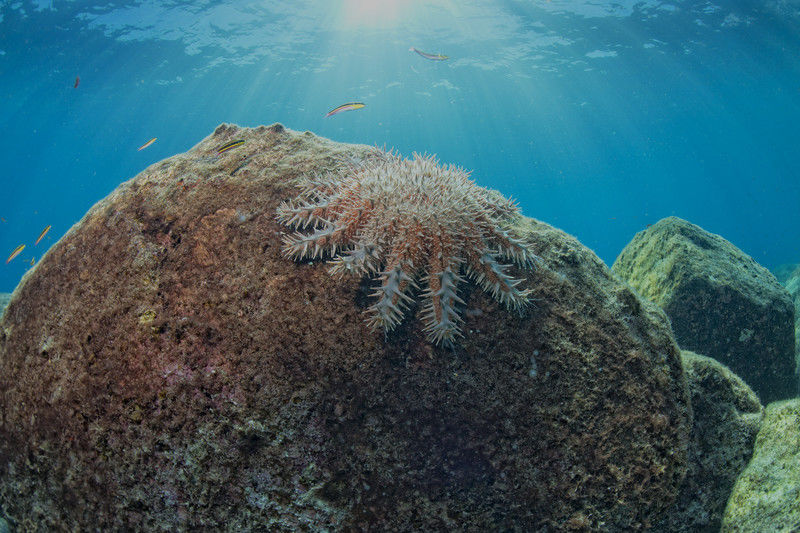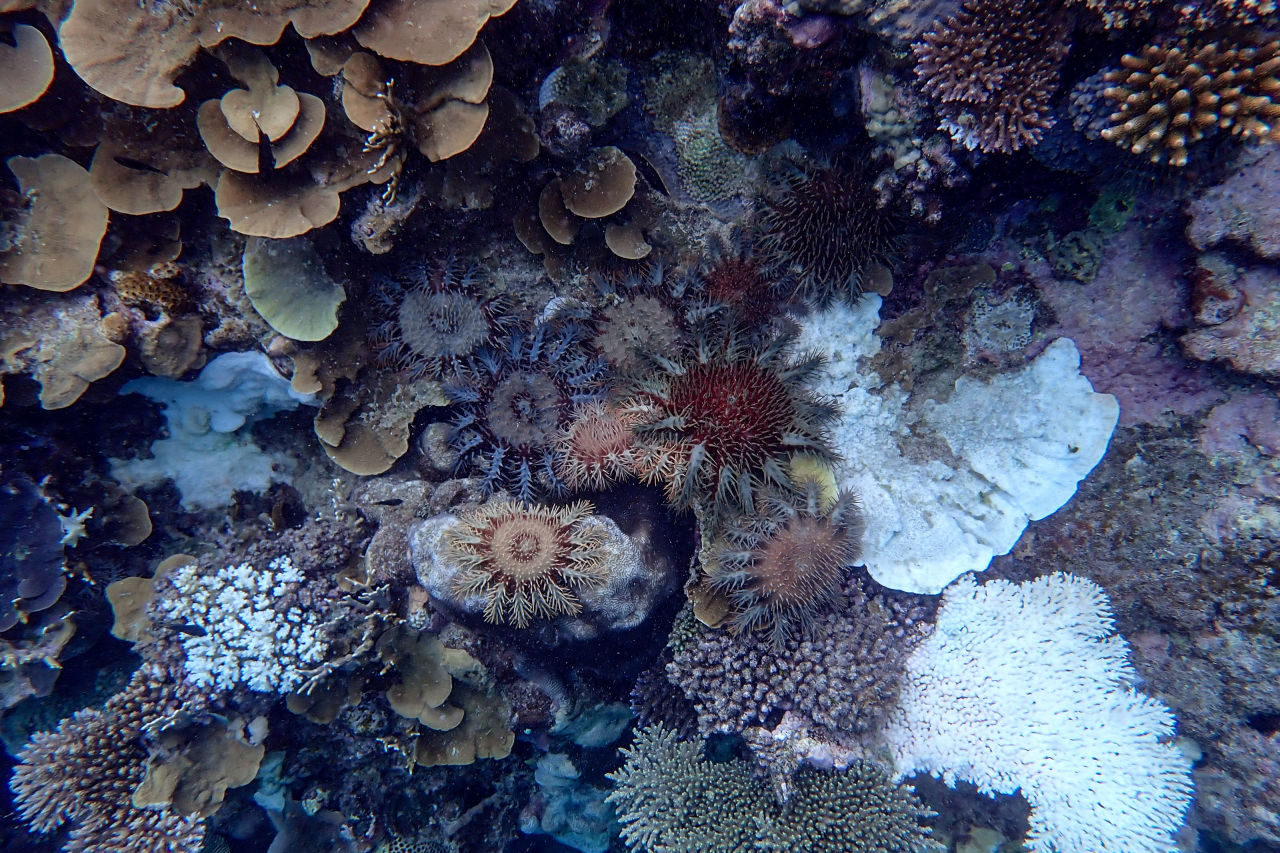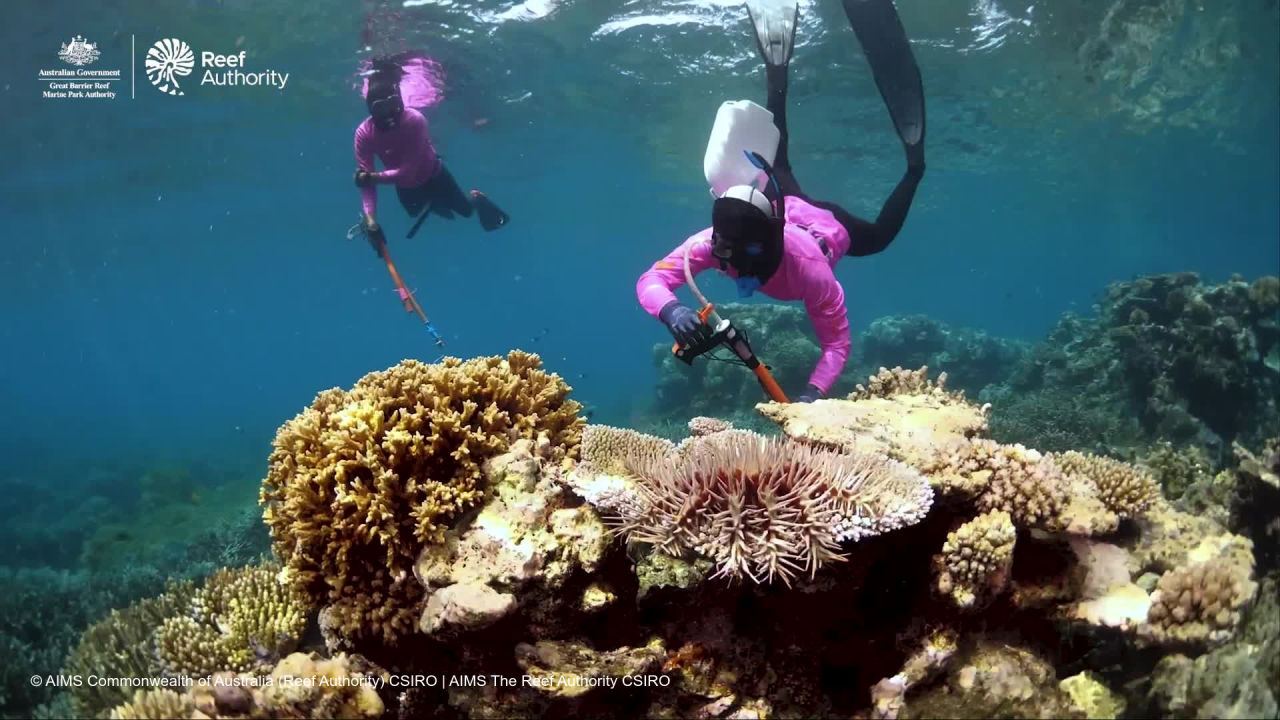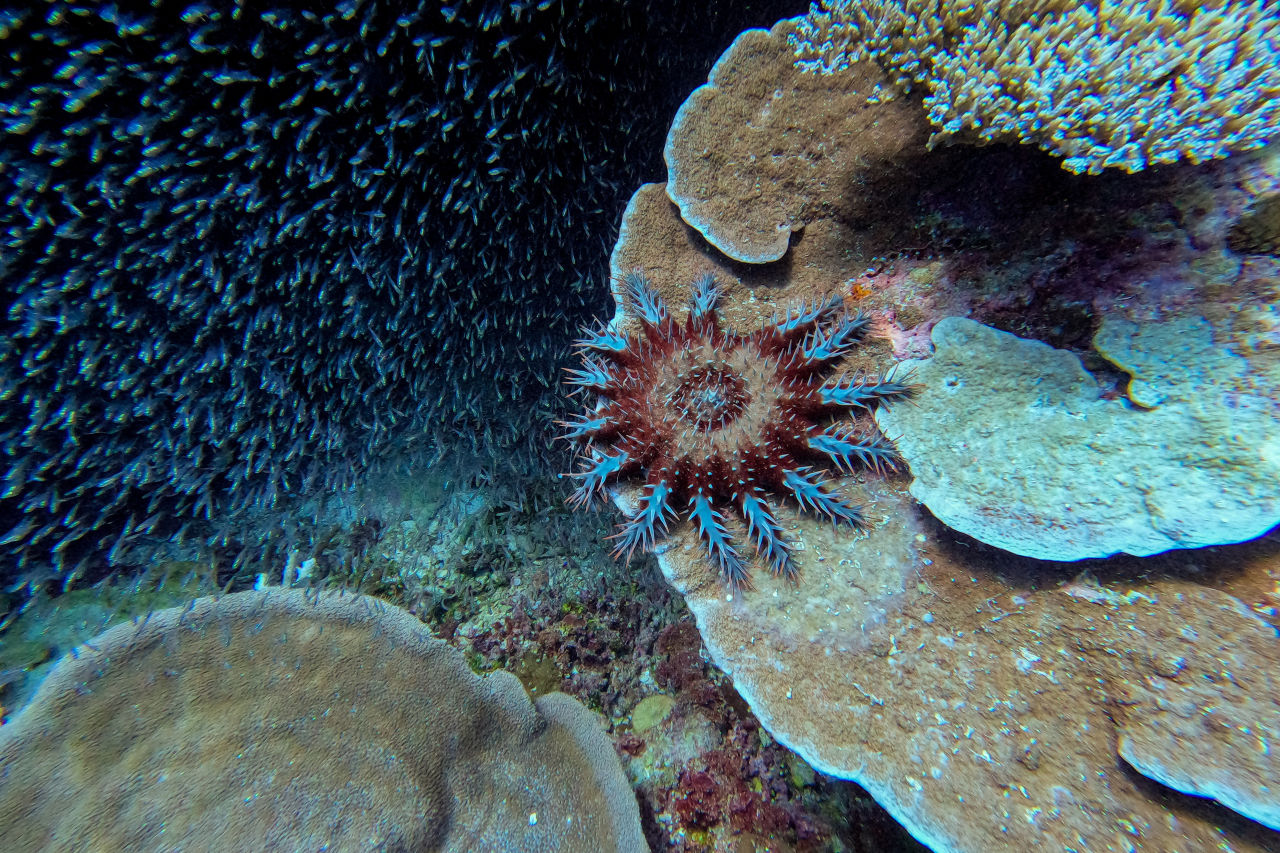If you could design the perfect predator, what superpowers would you give it? An insatiable appetite, an ability to reproduce quickly, uncanny hiding skills, spiny thorns to ward off unwanted attention? If you answered yes to any of those, then you’ve probably met one of the fiercest threats to the Great Barrier Reef: the mighty crown-of-thorns starfish (COTS).
While these coral-eating starfish are native to the Reef, they consume large quantities of corals – up to 10 square metres per year – and can strip a healthy reef of 90% of its corals. Population explosions, known as outbreaks, can cause broadscale coral loss and reef degradation. When corals face additional pressures, like coral bleaching and cyclones, it creates a complex conservation conundrum for our Reef.
Luckily for us, there is an incredible collaborative program that harnesses the power of data, science and on-ground action to tackle this problem right at the source.

Explainers ·
What are crown-of-thorns starfish?
Over the last four years, the Crown-of-thorns starfish (COTS) Control Program has been funded through the partnership between the Australian Government’s Reef Trust and the Great Barrier Reef Foundation, and delivered in partnership with the Great Barrier Reef Marine Park Authority (Reef Authority) and the Reef and Rainforest Research Centre (RRRC).
The COTS Control Program’s aim is to help give the Reef’s coral the best chance at survival against the multiple threats they face.
Through years of research and development, the COTS Control Program is guided by cutting-edge science, data and modelling to deliver a remarkably simple and effective hands-on solution – targeted culling.

A large outbreak of crown-of-thorns starfish was found on the Southern Great Barrier Reef. Credit: AIMS | LTMP.
The program’s achievements were recently summarised in a scientific article that demonstrated how this approach is making a real difference to coral reef health.
The study, led by the Reef Authority in collaboration with research and delivery partners, demonstrated up to a six-fold reduction in starfish numbers and a 44% increase in coral cover across regions that received timely and sufficient control effort.
By manually culling COTS, the COTS control team is reducing the number of coral-eating starfish to levels that support coral growth and recovery. That means fewer hungry adults, and fewer babies, which in their larval state can float long distances to reach far off reefs through ocean currents.
What’s the secret to an effective and simple culling technique? Household vinegar, or bile salts, and a long underwater injection gun to deliver the ‘one-shot method’, administered by a team of dedicated divers who are out all year long over thousands of hours targeting priority reefs.

Targeted culling of crown-of-thorns starfish has demonstrated up to a six-fold reduction in starfish numbers and a 44% increase in coral cover. Credit: The Reef Authority.
Due to the sheer scale of the Great Barrier Reef, which is made up of more than 3,000 individual reefs, it is impossible to reach every single one.
With limited time and money, the program’s careful yearly prioritisation ensures that efforts are being delivered to the reefs that will have the most impact, whether they are vital coral nurseries, or important tourism destinations.
Each year, the program targets more than 200 reefs and protects more than 200,000 hectares of coral reef habitat. Every adult coral that is saved can reproduce and help repopulate damaged areas.

The COTS Control Program harnesses the power of data, science and on-ground action to tackle this coral-eating starfish right at the source. Credit: AIMS | Justin Rowley.
Reef Authority Chief Scientist Dr Roger Beeden said: “Climate change remains the biggest threat to the Great Barrier Reef and management actions that support the Reef’s resilience are vital. This study shows targeted surveillance and culling can effectively suppress crown-of-thorns starfish outbreaks and protect coral across entire reefs and regions, which is vital to the Reef, especially during times of stress.”
This long-term data showed that suppressing outbreaks of the coral-eating starfish has huge environmental benefits for the Great Barrier Reef. At the same time, the program is also a great source of employment and career pathways, with over 100 people, including 11 Traditional Owners, playing their part across the program’s workforce.
Great Barrier Reef Foundation Crown-of-thorns Starfish Control Innovation Program Director Mary Bonin said: “We aren’t in the business of killing COTS, we’re in the business of protecting coral. The coral protected through this program continues to support the biodiversity of the Great Barrier Reef, providing habitat for thousands of marine species and helping repopulate damaged areas.”
It’s remarkable what collaboration, innovation and dedication have been able to achieve in only a matter of years. Together, we are working towards creating a more resilient Great Barrier Reef, giving it the best chance of survival and enabling it to keep doing what it does best.








